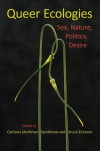Simcha-Sophie
a lovely mishmash of opinions interspersed with moments of clarity and vision by a vegan lesbian feminist mystery-loving, history-loving reader and writer.
Currently reading
Draft
I saved a draft of a review I began writing on Booklikes, and now I can't find it. Can someone help me out with this?
Thank you.
 2
2
Help!

honest to god, chapter 3 is putting me to sleep. I have not read this in almost a month because of chapter 3. I'm never a fan when people dig into formal philosophy, and this guy not only does that, but, if I'm reading this correctly -- and it's possible I am not -- then he is rather speciesist and of the mind that human intellect is the pinnacle of knowledge and nature and natural urges are too animalistic (as if humans aren't animals...)
Dense, dense dense -- both the chapter and me!
Drat - Just A Rant
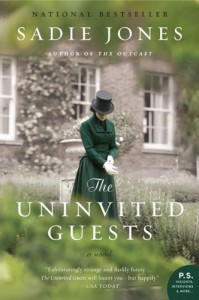
My first book of the new year; it's almost two weeks in and I haven't managed to read 200 pages yet. This book is a disappointment. I can say yes, it's well written (except for the comma splices! What is it with the writers I've read recently? Is this a new thing, yay comma splices? [except the last book I read was published in 1981]. Gads, it bugs the shit out of me. Ahem. Anyway...)
This book is appropriately creepy, and the characters were appropriately sympathetic (or not, depending on their roles) until the lovely line about how she remembered the way the two of them -- Ernest and Emerald -- used to cut up small frogs when they were children.
What this is coming down to for me so far is: excellent use of setting, despicable encouragement of speciesism. I understand that when this book took place (I'm thinking this is Edwardian England) people generally ate meat and so forth, but in England there was also a larger understanding of animal welfare, if not rights, and the constant descriptions of meat and the types of organs and muscles being prepared for the feast is disturbing because there is no context to it beyond just how much food the small group was going to eat. Then, of course, that bit about the frogs.
And animals figure fairly prominently in this book, from the horses to the little kitten, to the carcasses of myriad unnamed animals and the dissected frogs.
Perhaps by the end of the book there will be something to wrap it all together, but I rather doubt it. People just don't consider animals as characters for the most part. (Oh yes, and the extremely annoying use of "it" to refer to the pony Lady. One of the characters thinks of Lady as "she" but the author keeps calling her an "it.")
Okay, end rant.
Yesterday's Streets

I read this one over 20 years ago and at the time I remember I really really loved it. I can't tell you why, so I guess I need to re-read it. ;)
Just finished re-reading this, and I had to knock it down to 3 stars from 4. Initially I loved this book; the story, which follows mainly three children of the Frankfurt Wertheim family throughout the first half of the 20th century, was a joy to plunge back into. Tennenbaum shines at describing settings; she has a feel for the times -- mainly the first 33 years of the century -- and with just a couple paragraphs can put you in a run-down apartment or glamorous mansion. When she has a mind to, she also creates memorable characters whose interactions are believable. I found myself becoming invested in their lives.
The problem(s) I've found in re-reading this book range from grammar (far too many comma splices, they don't need to be there) to perhaps the two largest problems: too many characters and a tendency to grow didactic with "dialogue" regarding Nazism. I understand that there are readers who do not know much about the history of WWII, and that some historical context and explanation is necessary. But there is far too much historical instruction in the guise of dialogue and letters, and they slow down the novel and become a little too unbelievable. This may be the main problem encountered by fiction writers who incorporate political issues into their works - it is a fine line to draw and a difficult one to navigate. Tennenbaum is not very successful in her navigation.
This could be less of an issue, however, if not for her characters. I won't go into how many there are, but in creating a large family, and in covering 43 years of history, she has overstretched herself. To keep the consistency she begins in the first section of the book, she would need another 300-500 pages or a sequel.
There are four initial Wertheim children, Emma, Helene, and two twin boys, Andreas and Ernst. Ernst eventually moves to Palestine and disappears altogether. At the end of the novel, when Tennenbaum tries to wrap things up and tell us what happened to the bulk of the Werheims under the Nazis, Ernst has completely vanished from the story. As I read the last chapter, which spans 1938-1945, I kept wondering if any of the kids were going to contact Ernst, or if he was going to contact them, worried for their safety. Although it's possible Ernst withdrew from his twins-connection with Andreas because Andreas is gay, it's just not believable that he wouldn't say something, or contact someone, about the safety of the family he left behind. Early on in the novel, Tennenbaum mentions the twins-bond the boys have. Then poof! Ernst is just -- gone. Ernst is mentioned, what, maybe twice in the last 100 or more pages? Some further interaction between the brothers would have been interesting and more believable.
These four have some cousins who appear sporadically, and an uncle, Jonah, who we read very little about for the first 350 pages or so; in fact, it seems like his main purpose is to show him as a victim of Nazism and his Gentile wife who abandons him. They have several unnamed children who have nothing to do with their Jewish cousins -- it's as if oh suddenly here's Jonah, because we need a victim. (He does make a short previous appearance, and is a stuck-up snob, but there isn't much mention of him before this until his section on being a Nazi victim).
The character of Edu, who is a rather controlling uncle of the Wertheim kids and who has moved to Switzerland and escaped the fate of many Jews in Germany, disappears also in the last chapter. We see a lot of him before this, so the lack of his response, (also the lack of response by Emma), to the Holocaust, is disconcerting and peculiar. The end of the novel doesn't tie things up, actually, and I am left feeling disappointed. One thing Tennenbaum does well in that last chapter is of making readers feel the loss of the characters -- there is an emotional investment and it is hard to read of the fates of the family members. But there is only partial conclusion, and it feels unfinished. Because she spends so much time with Edu and Emma, for example, through the book, to have them vanish into the ether at the end is problematic.
The unevenness in which characters appear when is the most difficult aspect of this novel - coming and going, non-existent until suddenly they appear only to be killed off. Perhaps a smaller family would have been more manageable, or just focusing on the same four characters throughout the entire novel. Tennenbaum is ambitious in the number of years she covers -- all major years in German history -- and the size of the family she writes about. The scope, in the end, is just too large, and the last chapter is far too much telling history versus telling a story.
A disappointing re-read, but I can't completely un-recommend it if you like family sagas or Jewish and German 20th century history.
(One other discrepancy that is puzzling is the way Lene's daughter Clara/Claire, who made it to New York with her mother and a stepfather and half-brother, claims that she knew practically nothing about her family and about how they would have been Holocaust victims. This stretches the imagination to the breaking point, because she lived in the same house with her grandmother and aunt until she was nearly 10 years old. Her mother's nanny traveled with her to America, and it's unbelievable that someone so devoted to the Wertheim children would not have spoken to Clara/Claire about them).
Hitler's Dancers
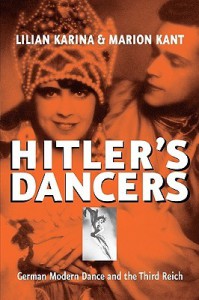
I have to admit that this book took me about two years to read - I was always picking something to read alongside it.
This book is interesting in terms of how dancers, particularly modern dancers, in the early Nazi years were swift to embrace Naziism and its racist tenets. But it is not written for people with little knowledge of the major figures of German dance. For that to be the case, the book should have been set up with at least a concise description of some of the major figures, pictures of Laban and Wigman. I had heard somewhat of Laban from movement classes I took in theater school some 20 years ago, but beyond his name I knew nothing about him. Kant does backtrack a bit into her section to tell us about Laban and von Keudell, but she does not offer similar history about Mary Wigman or Gret Palucca.
Perhaps if the setup of the book had been different I would have found this easier to get through. Karina's section is somewhat more interesting, being personal history, but she definitely has an understandable axe to grind, and without a more concise overview of the major players, it is rather difficult to follow who is who (the fact that I would go some weeks between readings probably also played into this).
And the appendices, while interesting, are mainly documents supporting Kant's research and much as one might suspect when reading official documents -- extremely boring. In another way it is always interesting to have contemporary documentation - the book "The Nazi Years" by Joachim Remak is comprised mainly of translations of such, but is actually easier to read -- and a couple of the letters concerning Jewish children wishing to attend ballet school, and one dancer's arrest for homosexuality -- are much more interesting and strike the reader more for their personal, rather than academic and/or governmental tone.
But for the most part this is a dry, academic book. People who like that would probably like Kant's section (They might find Karina's too "anecdotal") -- or maybe people with an already-large knowledge of Laban, Wigman and other leaders of modern dance (did you realize Isadora Duncan was basically a Nazi, or at least believed strongly in racist genetic theories?). It is a valuable book, proving that leading dancers readily embraced Nazi policies, but it is not super reading for the lay person.
My Bridges of Hope
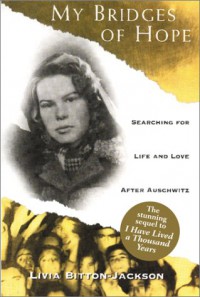
I read this following Bitton-Jackson's remarkable "Elli," and wow, was I disappointed. While "Elli" has somewhat the feel of a YA book, it is never dumbed-down and never glossed over.
"My Bridges of Hope" covers a longer time span, and perhaps that's part of the problem with it, but it feels mostly like a summary of the author's time following the Holocaust to her immigration to America. There are a couple chilling moments, some times when emotion peeks through the list of events, but overall there is something about the dialogue, the constant "my God" exclamations, that feels both exaggerated and over-dramatic. Although the events of the Holocaust were probably much more harrowing than the aftermath, the quiet remembrance of events, the writing itself, in Bitton-Jackson's first memoir evokes emotion in the reader - Bitton-Jackson mastered there the art of telling the emotional, dramatic story that she just didn't repeat here.
It has its moments of beauty, but certainly not enough to make this worthwhile reading. Stop while you're ahead. Read "Elli" and skip this one.
The Baker Street Letters (Baker Street Letters Series #1)
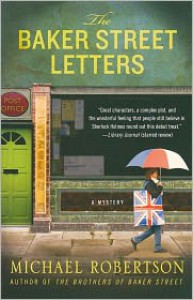 Briefly: this is a disappointment. The whodunit aspect was a nice twist, but it's otherwise kind of bland and fairly two-dimensional.
Briefly: this is a disappointment. The whodunit aspect was a nice twist, but it's otherwise kind of bland and fairly two-dimensional. Also, from the jacket blurb I expected the mysterious missing papers to be more exciting than what they were - this is not pirate gold or
Hollywood scandals or anything British. Much of the novel takes place in Los Angeles - there isn't really much back-and-forth, even, between London and LA, and -- well. As I said above.
Elli: Coming of Age in the Holocaust
 This is another one I read probably over twenty five years ago. And it's another I've kept for that long. A second reading should give a better idea of whether the book stands up over time.
This is another one I read probably over twenty five years ago. And it's another I've kept for that long. A second reading should give a better idea of whether the book stands up over time.Ysabel
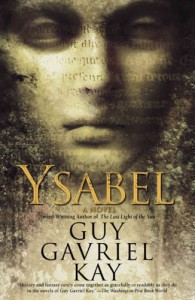
I don't bother to write a synopsis of the book, because I think most people who review books on Goodreads already know what the book is about.
So, to dive right in: I was unaware initially that this is a young adult book, and while that doesn't necessarily mean it's going to be uninteresting to adults, in this case it means that Kay seems to try too hard to make the hero, Ned, current with his vocabulary, his clothes, his choice of music. So the dialogue becomes, at times, difficult: the word "really" is overused by pretty much everyone in the novel, and everyone just "googles" things. (I realize this is now an accepted verb, but in this novel it has the effect of showing Kay trying too hard to be up to date). Melanie turns statements into questions a lot, and an unfortunate number of brand names are flung around (though the brand name issue isn't as bad as I've seen in other novels, not all of them young adult). It also leads to an unevenness in POV. Though the majority of the novel is told in limited third person (from Ned's perspective) there are a number of times when we get a little closer than usual into Ned's head, and second-person POV comes out: "Could scare you more, that thought." (p. 382) "You had to call it fear, really" (p. 200) "Anger wasn't the only thing you could use" (386)- those are just three examples, but they stick out from the middle of third-person POV paragraphs, and it's jolting. All stories are contrived to some extent, but these things make the novel feel really contrived, like the author is just trying too hard. I am also not a fan of comma splices; there are many sentences that could be cut in two or could benefit from the use of a semi-colon used, but Kay uses commas instead.
The story itself is fairly interesting, but the book is too long. At a number of times it feels as if we are re-reading something we read before, and parts of the novel drag. I read that Ned's aunt and uncle are characters from a previous series Kay wrote, and some of the length seems a result of his wanting to add these two old characters to this new novel. Ned's aunt turns out to be important because of the family history that ties into the story, but there is too much banter and possibly too much inside joking. Kay also aims to keep us in suspense about why Ned is so involved in the story of Ysabel, Phelan and Cadell, but he leaves it too long. This contributes in part to the going-around-in-circles feel mentioned earlier.
The ending is kind of gross. When Melanie gets released from Ysabel's body, she kisses Ned, who is 10 years younger than she, on the lips. That's not a problem except he is a teenager and she is in her twenties, and then they think of sleeping together. What 24 or 25 year old woman wants to sleep with a 14 or 15 year old boy? That's just creepy. Where did that come from? Does Kay wish to somehow show or suggest that once Ned has completed his quest, as in the tales of centuries ago, he is now a man? (This is actually hinted at earlier in the novel.) That's a bit disturbing. Also disturbing is Kay's desire to not kill off any of the human characters (except one ornery Druid) until the very end (and they are characters who repeatedly die and return to life anyway and have lived for thousands of years) -- but animals are easily expendable. Maybe they're spirit animals, or maybe they're not, but even if they are just spirits, they are inhabiting the bodies of real animals, and thus, it's okay to kill them and not feel bad. The usual disregard for lives when it comes to non-human animals is highly apparent here and bothersome (pate' and leather coats are also featured as tasty and cool items, respectively). These are not killings that make a connection between human animals and non-human animals; these are simply things, characters, objects.
I also find the dialogue between Ned's aunt and mother to be particularly bothersome. They are condescending, irritating in the way they talk about all men being idiots, know-it-alls who beg the question: who wants to spend any time with these people? Fitting that they're sisters, but very unlikeable. While it's likely that their attitudes are intentionally created by Kay, their scenes feel contrived and actually rushed and too long at the same time. It feels like a lot of insider information you will only get by reading Kay's previous novels, and after reading this one, that is never ever something I will spend valuable time doing.
The history of Aix and particularly of Monte Sainte Victoire is fascinating, and I love Kay's description of setting (although the scenes involving the cathedral are confusing and difficult to picture; perhaps in part because I don't know the names of things in a church). It's very vivid and puts us there. Particularly the last few scenes on the mountain/cave are highly evocative.
I do try to finish every book I start, and this one is this actually a notch above some of the others I've struggled through. I can't say it's terrible - the idea of the story is strong, the setting is very strong, and Ned and the supporting characters (aside from his mother and aunt) and sympathetic enough (until the end when it's hard to tell if he's cheating on Kate or not -- he easily would if Melanie would have sex with him; and Kate goes from assertive to insecure, which feels out of character). The book just has too many problems, as mentioned above, for me to be very enthusiastic about it.
Savor: Mindful Eating, Mindful Life

I did not like this as well as I thought I would when I began reading it.
I've gotten to the section on Mindful Eating and am very disappointed. Although there is little in the book that's judgmental, in terms of what kind of food to eat and what to stay away from, the authors have no problem saying things like "you should not drink soda or sugary drinks," but when it comes to meat and dairy, they are simply encouraging you to eat less, or they say things like "if you eat meat, choose poultry and fish" which is pretty awful, considering the number of chickens murdered to be food, as well as the terrible condition of the oceans. There's almost always this kind of allowance for "if you eat meat" rather than putting meat and dairy in the same category as soda, saying that people should really stay away from it.
They do offer a lot of veg resources in the back, which is a positive and they do mention, briefly, the terrible environmental impacts of meat and dairy and eggs, as well as -- very briefly -- cruelty to animals.
I'm going to keep reading it, because it has been helpful in reminding me to be mindful and I am interested in seeing how it comes together, but I'm disappointed in it.
Update: I could not finish this book because one of my cats decided it made a nice place to pee on. I have no desire to go back and finish it. A meditation and mindfulness practice, plus an understanding of why veganism is the most compassionate and healthy way to eat, will suit as well as this book.
The Night Watch

I think "Tipping the Velvet" spoiled Waters' follow-up work for me. Or perhaps it's that Waters captures the Victorian era the best, because "Fingersmith" was fantastic, too. (I generally review books on how well I like the story, which is not necessarily the same thing as whether the writing is good or not.)
Waters' concept, of reversing chronological order, is an interesting one, a different way to write a novel, but I found it not so satisfying. Normally, in most novels that take an early-to-late chronological approach, by the time I get involved with the characters, I trust that their background is going to either be woven into the narrative or not terribly important. When Waters takes us backward in time, we're getting information that is already known; suspense is limited, repetition is risked. And yet, not everything that wants clarifying is clarified. How, exactly, did Mr Mundy and Duncan come to live together? What, exactly, happened between Julia and Kay? Why, after undergoing the procedure she went through, did Viv stay with Reggie?
This novel is generally entertaining, and as she does in all her novels, Waters' descriptive settings evoke the time period. Sometimes I marvel at how she decides what details to leave in and, more fantastically, how she even found these things, like the sounds of air raids, the singeing of hair, of what a blitzed-out London looked like (well, I suppose newsreels are helpful there, but Waters sets you in time and place perfectly).
The pace of the novel is uneven for me, and I think that's in part because a good chunk of it takes place in jail, and while Duncan as a character interests me, his time in jail does not. Reading stories of people in jail, unless they're first-hand accounts of political prisoners (even fictionalized), bores me. This is not to say that Waters is a bad writer, but that these segments of the novel made me sleepy. I wanted to know more about Duncan as a child than about his time in jail, for example. I think this is also a danger of writing a novel that features several main characters: some of the characters will inevitably be annoying, or boring, or part of an uninteresting plot, and it makes the novel feel uneven. I also find that the characters I wanted to know the most about, Kay, for example, I knew the least about. We get most of Kay's backstory from Julia, who comes across as an arrogant, annoying woman, someone I, at least, could note understand Helen's attraction to -- or Kay's, for that matter. She's unreliable. That was perhaps my biggest problem with this novel: too much time spent on characters I didn't care for.
Dora: A Headcase

Wow, this was a colossal waste of my time.
Pretentious.
Obnoxious characters, hipsters.
Story trying hard to be Cool. I mean COOL.
Moral of the story: you can be, and will be, fucked-up if you're rich.
Ending of the story: money will save you, thank god the main character was heiress to a windfall that allowed her to be generous and save all her friends who needed saving.
Sugar Blues
 This book has a couple of good places that talk about what sugar does to your body, and the history of sugar is very interesting.
This book has a couple of good places that talk about what sugar does to your body, and the history of sugar is very interesting.That said, although I think Dufty takes an irreverent tone - perhaps because the topic is actually so serious -- he uses the racist slur "Coolie" a couple times. I can't tell if he uses that not from his own point of view, but from the point of view of white racist sugar-producers, but because it's not certain and used on more than one occasion, I find it very disturbing.
There is a chapter or maybe two on the evils of the FDA and AMA and food manufacturers and how they push(ed) to keep the dangers of sugar from the public. I am so less than surprised that I was very bored by those chapters (also because they have not been updated in 30 years).
It's an okay read but my guess is that the China Study or something more current may be better. I do think that sugar needs to be seen more seriously as a poison, but this book doesn't do it for me. Proof is that despite myself I continue to eat sugar.
Strange Pilgrims
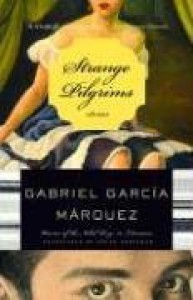 I was torn between giving this two and three stars. The writing is, not surprisingly, seamless and makes the book easy to read. Not as much magical realism as I'd expected. Better than "100 Years of Solitude," which I did not care for.
I was torn between giving this two and three stars. The writing is, not surprisingly, seamless and makes the book easy to read. Not as much magical realism as I'd expected. Better than "100 Years of Solitude," which I did not care for.I think the last story is the most powerful; there is more characterization, more depth to the characters. Yet it's a highly male-centric book, with females as very secondary characters. Marquez is more interested in plumbing the depths, and showing/tracing the growth, of the male characters.
Also, reading from an animal-standpoint critique, it sucks to be an animal in Marquez's world: meat, meat, meat; and fur coats. Blah.
Anyway, this is obviously a really intense review or anything.
For what they are, I find most of the stories to be interesting, and what Marquez does with characters in such short stories is rather amazing: creates whole, full people in a matter of pages. But it's hard for me to read without the perspective of a feminist and a vegan, and that's where I find the majority of problems with Marquez.
Curiosity Thrilled the Cat: A Magical Cats Mystery
 This mystery is light and fluffy, features a tabby cat and a tuxedo cat with magical powers (tabbies are my downfall) and books. I read this to give my mind a rest, to read mostly the way I used to read: for pure unadulterated enjoyment without thinking too much.
This mystery is light and fluffy, features a tabby cat and a tuxedo cat with magical powers (tabbies are my downfall) and books. I read this to give my mind a rest, to read mostly the way I used to read: for pure unadulterated enjoyment without thinking too much. Although I read mysteries because I love the puzzles and am always pleased when I can be clever enough to figure out the ending, I like it more when I’m stumped or surprised and can marvel at the author’s cleverness. This book went about half and half that way; I figured part of it out early on and didn’t quite guess the other part for certain until it was revealed. But it’s as if Kelly writes for a particularly dim-witted audience: you can see her laying the clues
and leading the reader very clearly down the road. I was aware of everything having significance and of the clues matching up with specific characters. Well, there was one surprise, but it was the kind of annoying surprise that’s out of left field, where a different character suddenly appears about halfway or more through the book without having been mentioned at all before this. There is the requisite handsome cop and budding romance.
I found it to be okay in an entertaining sort of way, and I’ll probably get the subsequent books from the used book store. Because I am curious, and I did enjoy it.
Emotional Healing for Cats
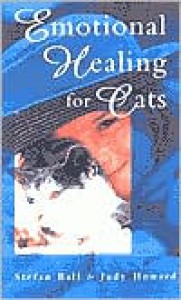 This is a go-to reference but I'm not sure why. I don't seem to have much luck with flower remedies. But I keep trying. Just in case.
This is a go-to reference but I'm not sure why. I don't seem to have much luck with flower remedies. But I keep trying. Just in case.

